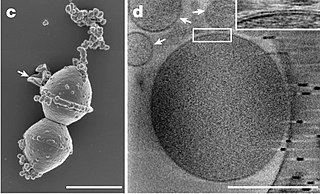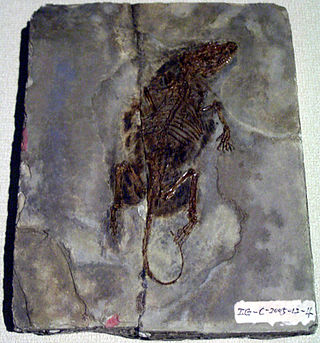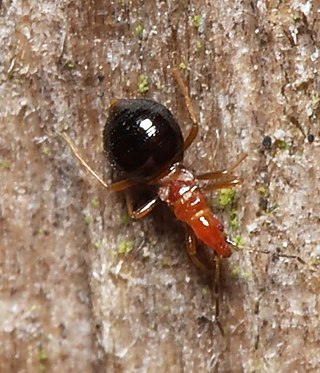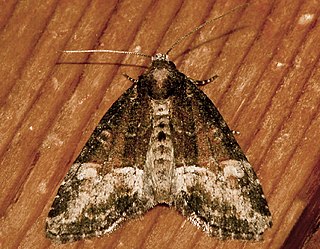
Glaresis is a genus of beetles, sometimes called "Enigmatic scarab beetles", in its own family, the Glaresidae. It is closely related to, and was formerly included in, the family Scarabaeidae. Although its members occur in arid and sandy areas worldwide, only the nocturnal adults have ever been collected, and both the larvae and biology of Glaresis are as yet unknown. Due to their narrow habitat associations, a great number of these species occur in extremely limited geographic areas, and are accordingly imperiled by habitat destruction.

In prokaryote nomenclature, Candidatus is used to name prokaryotic taxa that are well characterized but yet-uncultured. Contemporary sequencing approaches, such as 16S ribosomal RNA sequencing or metagenomics, provide much information about the analyzed organisms and thus allow identification and characterization of individual species. However, the majority of prokaryotic species remain uncultivable and hence inaccessible for further characterization in in vitro study. The recent discoveries of a multitude of candidate taxa has led to candidate phyla radiation expanding the tree of life through the new insights in bacterial diversity.

Xylomyidae is a family of flies known commonly as the wood soldier flies. They are xylophagous and are associated with dead or dying wood.

Bosmina longirostris is a species of water flea found in the Great Lakes and Central Europe. It is found in the plankton near the shoreline of lakes and ponds.

Bosmina is a genus in the order Cladocera, the water fleas. Its members can be distinguished from those of Bosminopsis by the separation of the antennae; in Bosminopsis, the antennae are fused at their bases.

Trechnotheria is a group of mammals that includes the therians and some fossil mammals from the Mesozoic Era. It includes both the extinct symmetrodonts and the living Cladotheria.

Elmidae, commonly known as riffle beetles, is a family of beetles in the superfamily Byrrhoidea described by John Curtis in 1830. Both adults and larvae are usually aquatic, living under rocks in fast-flowing shallow areas of streams, such as riffles, feeding on algae and biofilms. There are more than 150 genera and 1,500 described species in Elmidae. The oldest record of the group is Cretohypsilara from the Cenomanian aged Burmese amber.

Neoligia invenusta is a species of cutworm or dart moth in the family Noctuidae. It is found in North America.

Loricula is a genus of minute bladder bugs in the family Microphysidae. There are more than 20 described species in Loricula.

Neoligia exhausta, the exhausted brocade, is a species of cutworm or dart moth in the family Noctuidae.
Neoligia tonsa is a species of cutworm or dart moth in the family Noctuidae.
Neoligia crytora is a species of cutworm or dart moth in the family Noctuidae.
Lacinipolia basiplaga is a species of cutworm or dart moth in the family Noctuidae. It is found in North America.
Lacinipolia lepidula is a species of cutworm or dart moth in the family Noctuidae. It is found in North America.

Neoligia subjuncta is a species of cutworm or dart moth in the family Noctuidae. It is found in North America.
Lacinipolia erecta is a species of cutworm or dart moth in the family Noctuidae. It is found in North America.
Lacinipolia sharonae is a species of cutworm or dart moth in the family Noctuidae. It is found in North America.
Neoligia canadensis is a species of cutworm or dart moth in the family Noctuidae. It is found in North America.

Eurydemus is a genus of leaf beetles in the subfamily Eumolpinae. It is known from Africa and Fiji.

Claraeola is a genus of flies in the family Pipunculidae.












